HISTORY OF CHIGWELL ROW
ALL SAINTS CHURCH
A new ecclesiastical district known as the Parish of Chigwell Row was formed in 1860 covering an area of about 1,000 acres. The first rector at All Saints, Reverend Laurence, was installed before a church had been built there. Morning as well as Evening Services were held in the Schoolroom and Holy Communion was celebrated monthly. Although many children were baptised in the Schoolroom, it was not licensed for marriages. The services were well attended in the evenings and due to full capacity some people were unable to enter.
Land from Hainault Forest was set aside for a large church with spire but the cost proved too expensive. Architect J. P. Seddon revised the plans changing to a smaller church without a tower or spire at a cost of £4,000. After some testing moments a tender of £3,400 was accepted from the builder Williams of Cardiff and the building was completed a year later in August 1867. Three-foot thick walls were made of brick and faced with Godalming stone. The church was consecrated in 17th September 1867 by the Bishop of Rochester.
Iron hurdles were used on the boundary to separate the church from the road. During 1895, the iron hurdles were replaced by a stone wall.
After receiving a number of donations Mr. Seddon designed a tower. If the tower had been built at the same time as the church it would have been placed at the west end of the building. Seddon's new plans had the tower standing at the side. The tower was completed in 1903 at a cost of £2783. Mears and Stainback from the Whitechapel Bell Foundry installed a peal of six bells in 1910. Two more were added in 1928.
A lychgate was added to the Churchyard entrance in 1934.
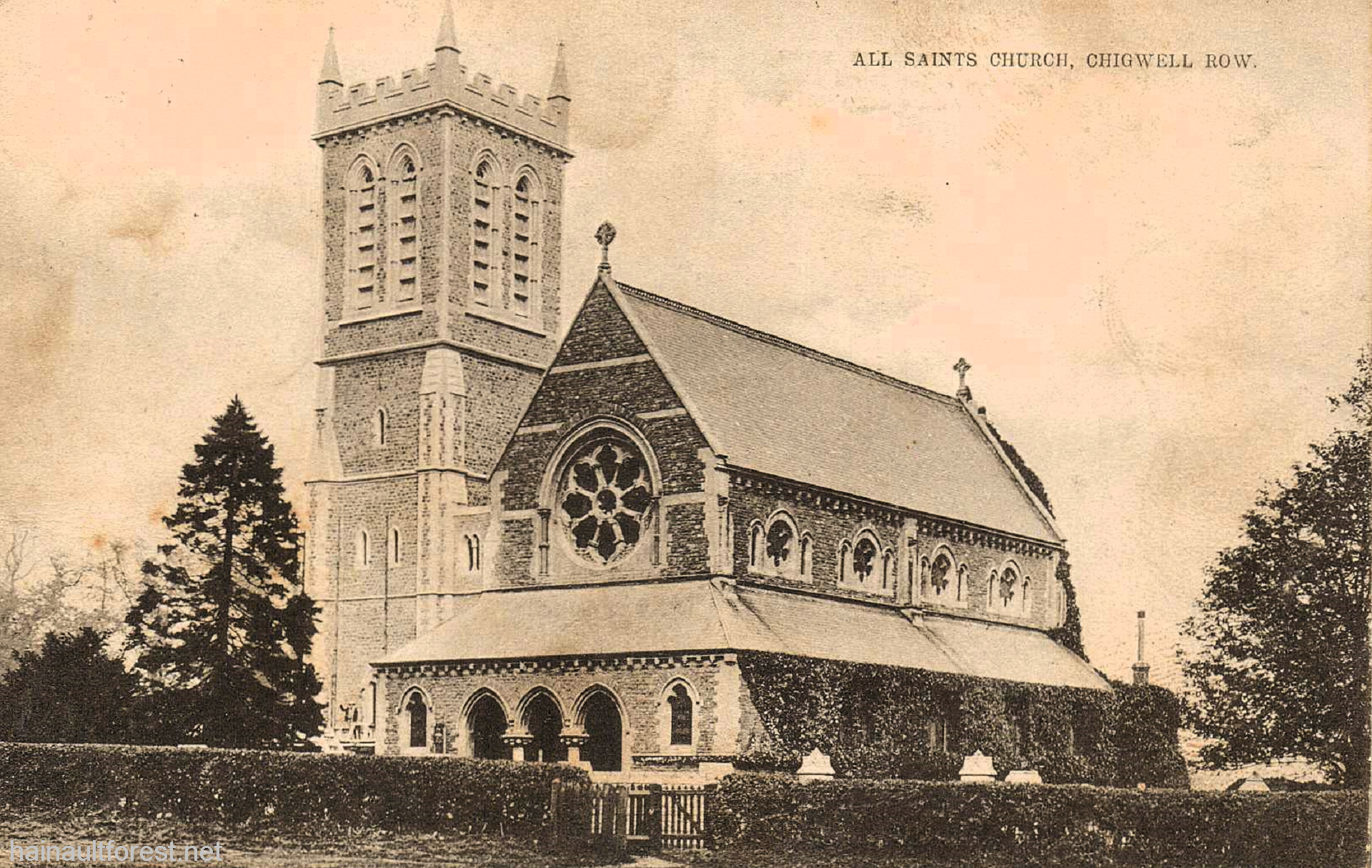
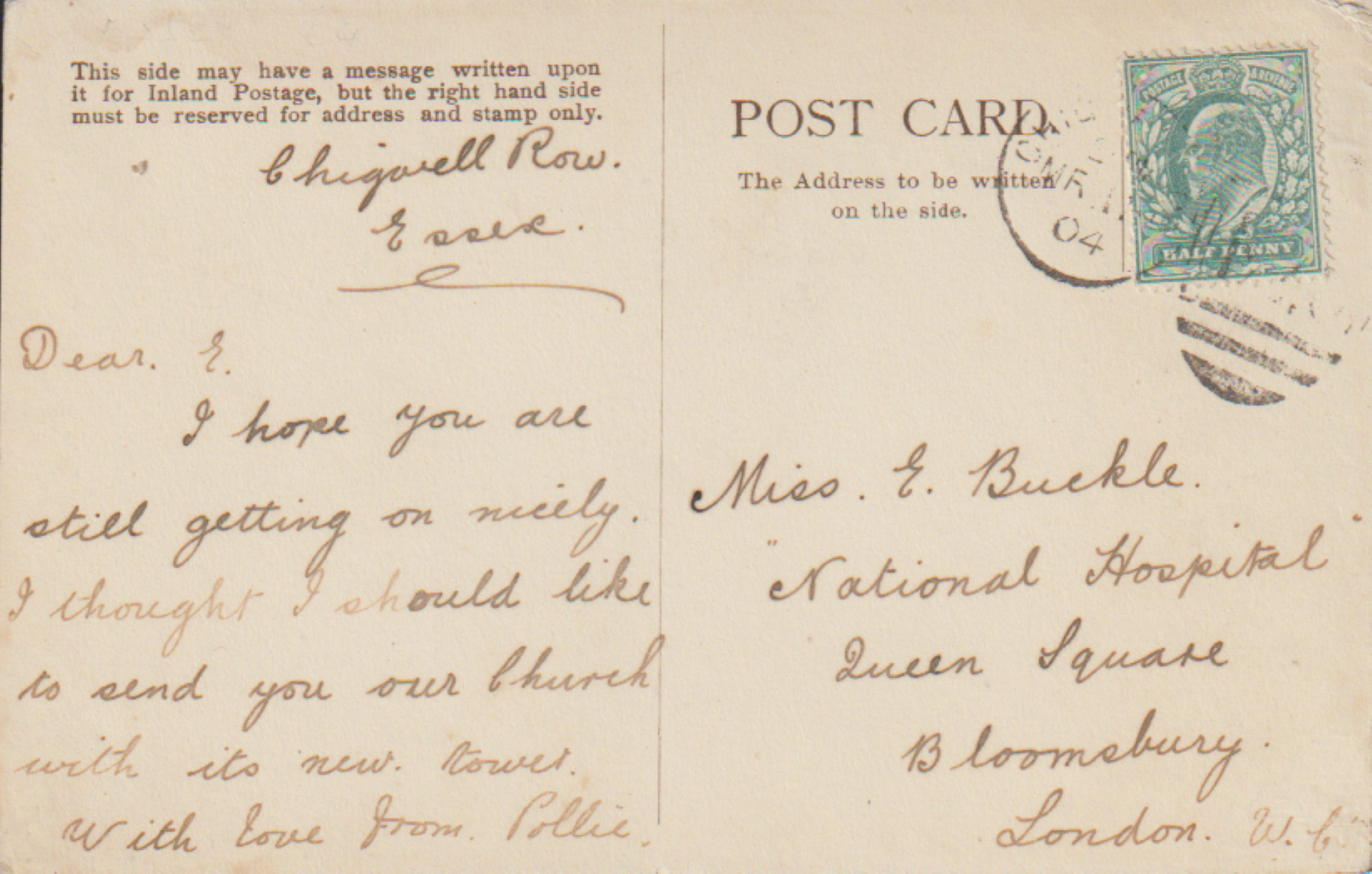
Message: "Dear E. I hope you are still getting on nicely. I thought I should like to send you our church with its new tower. With love from Pollie."
Posted: 11th March 1904
#

There is an abundance of beautifully carved stonework built into the structure. Saintly faces grace the walls, all of them different.
#

The uniquely patterned columns are in a style that appears much older than it actually is. Most of the columns are ornamented with foliage, but there are also some interesting zoological carvings on the second column from the organ.
#
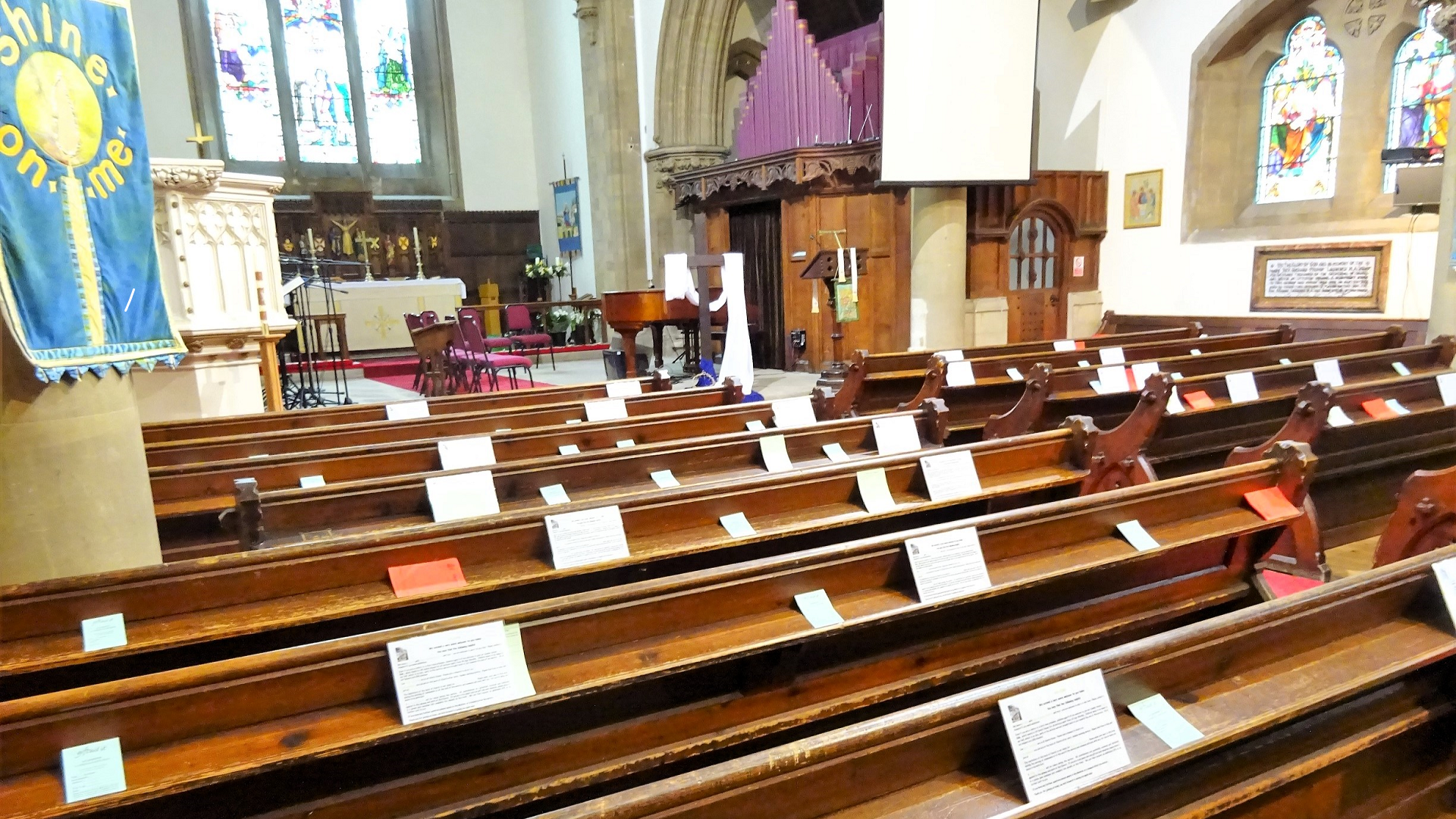
The only stone showing on the interior walls of the Church is around the windows, elsewhere the brickwork has been plastered over.
#
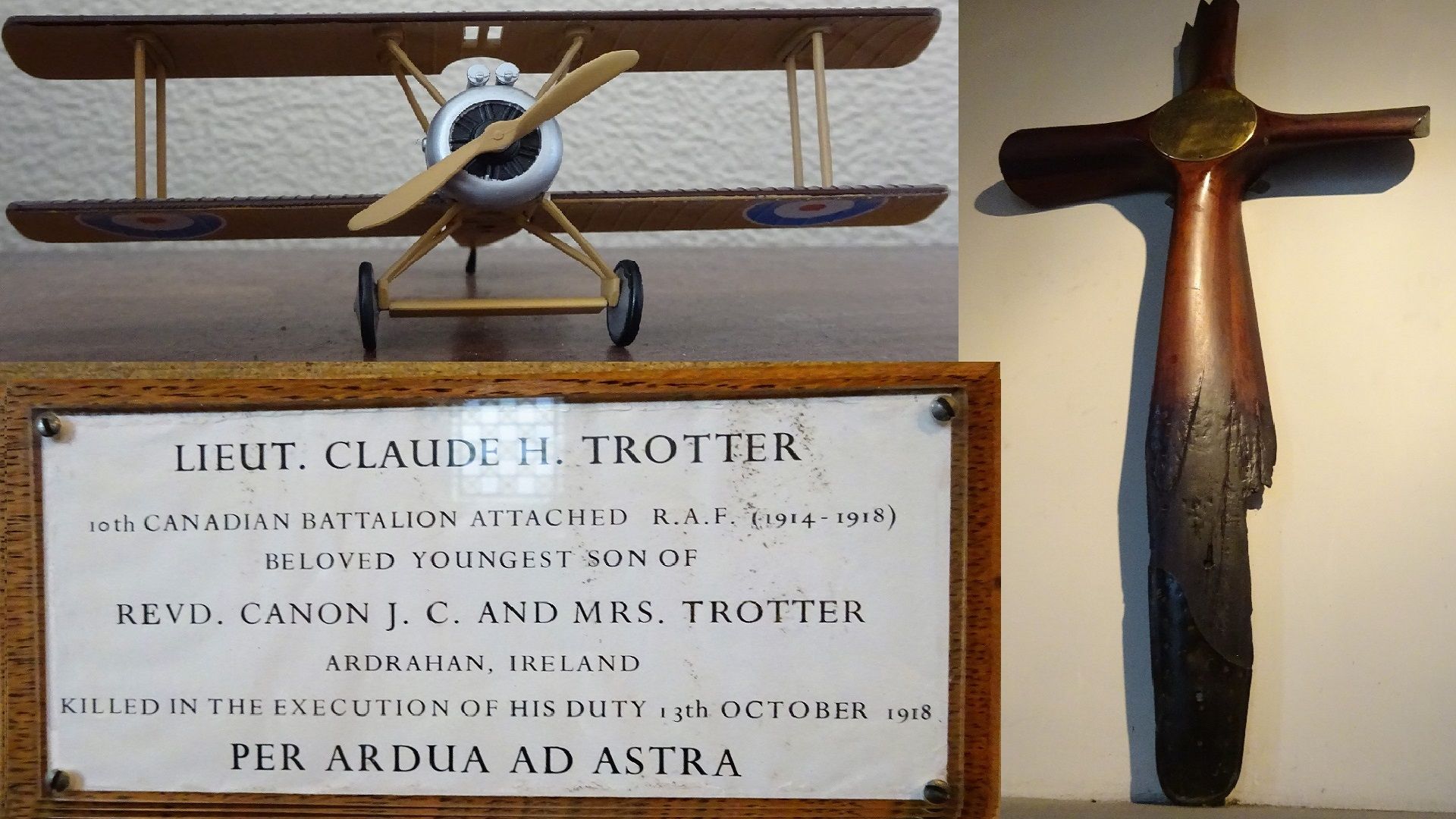
On 23th October 1918, Lieut. Claude Handley Trotter, stationed at Hainault Farm aerodrome, crashed his Sopwith Camel E5147 after being blinded by a searchlight. At his funeral service a flag-covered coffin passed servicemen performing a gun salute of honour outside the church. A memorial propeller and plaque have been placed inside the church to his memory. Sopwith Camels actually had two-bladed propellers similar to that shown on the model in the picture. Per ardua ad astra translates as 'Towards the Stars'.
#
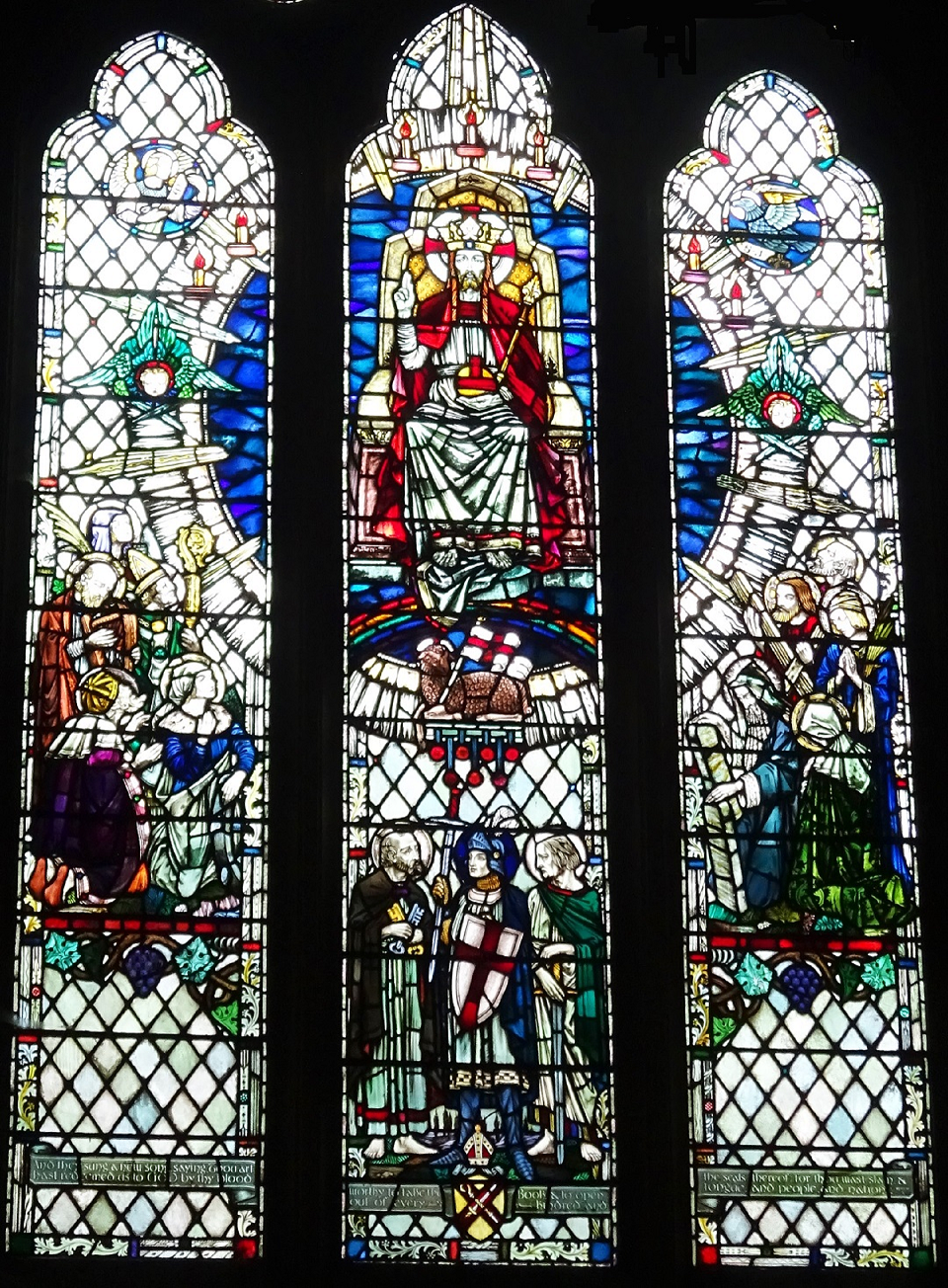
The altar window shows heaven based on the Book of Revelation with God sitting on his throne.
#
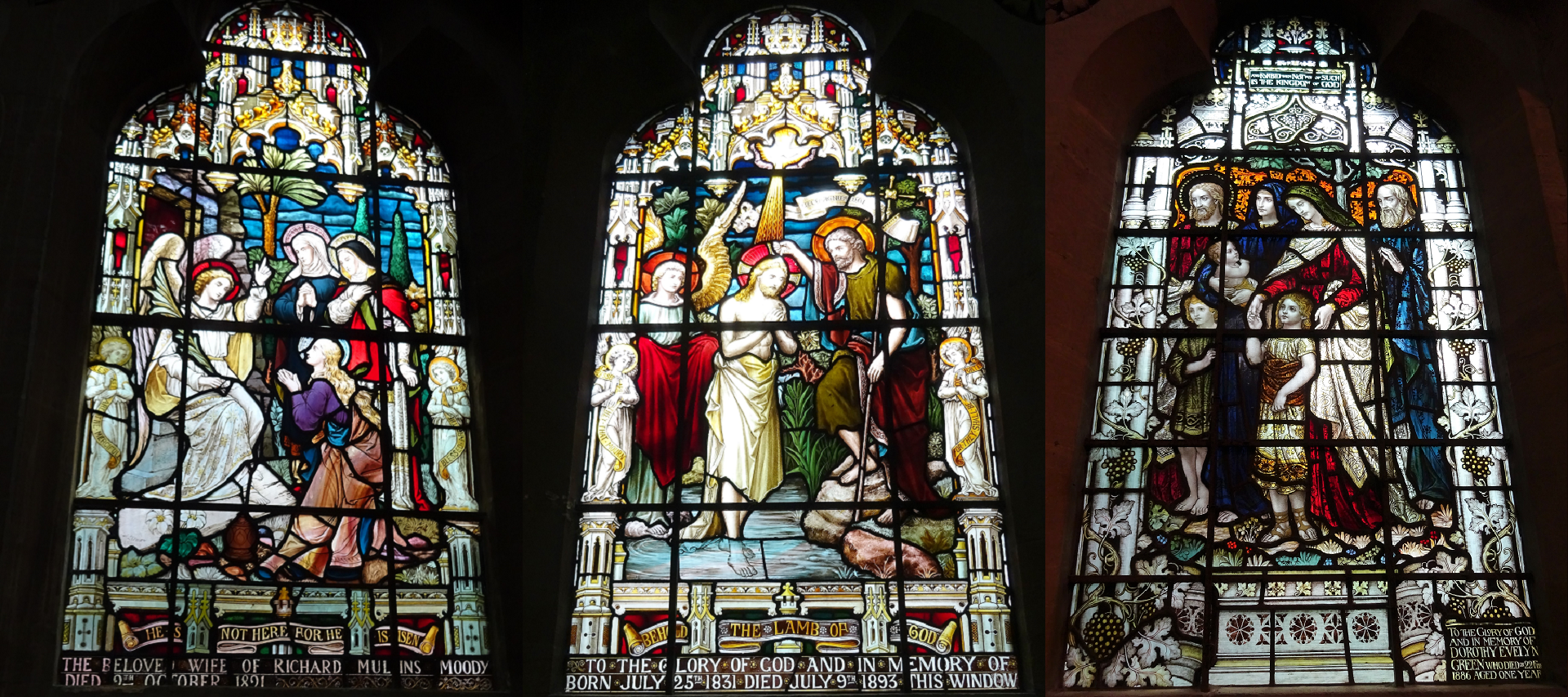
The life of Jesus depicted in stained-glass.
#
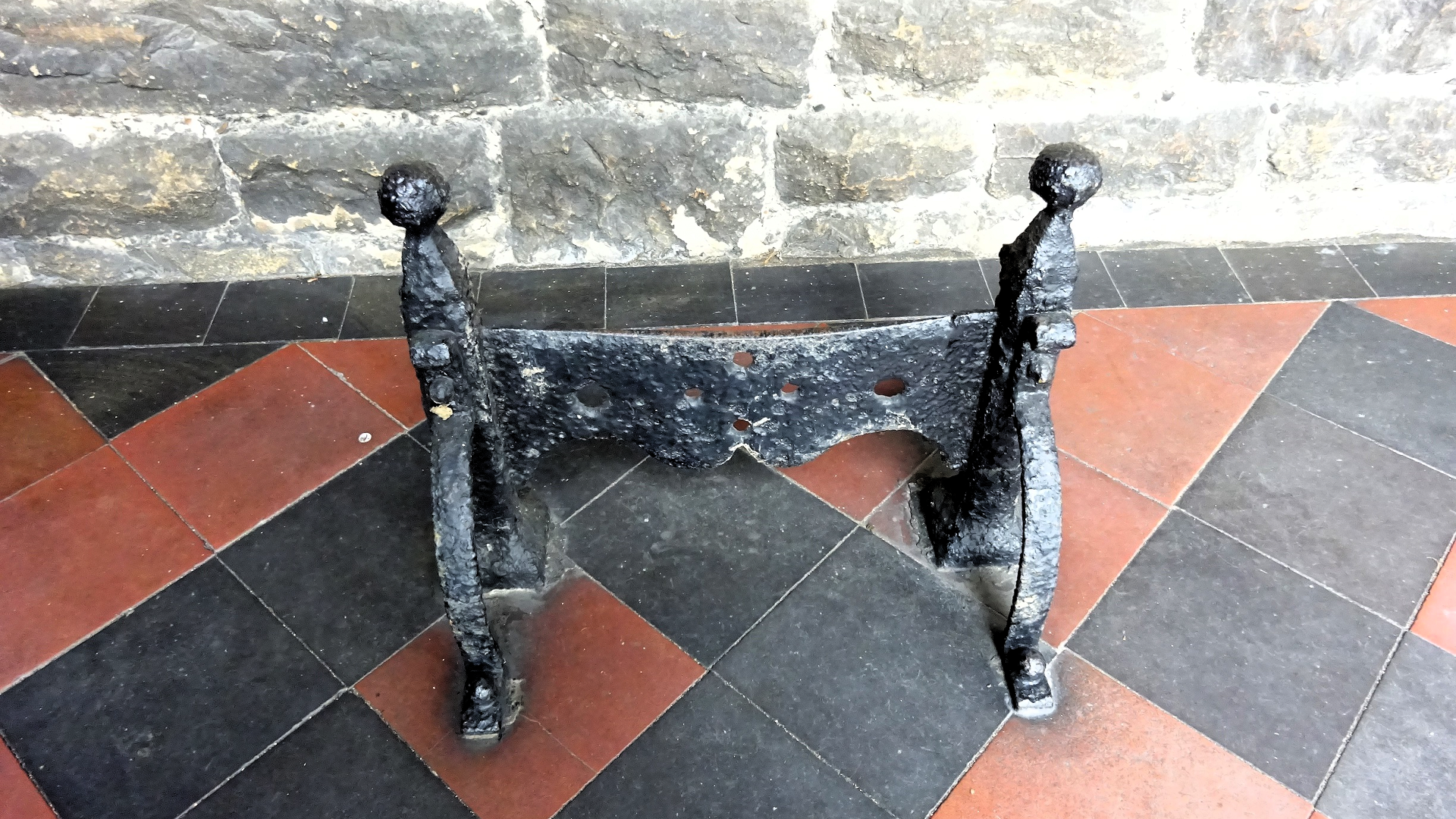
During Victorian times many parishioners used muddy forest paths and roads when walking to church. Boot-scrapers placed outside the church enabled them to clean their boots before entering.
All Saints became a Grade II listed building on 25th October, 2024.
#
Written and photographed by Raymond Small. ©2017
Thank you to Peter Comber for providing additional information.
© hainaultforest.net. All rights reserved.

